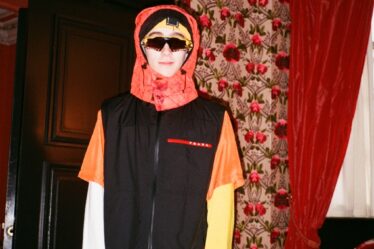
Zegna, which prides itself on an old-world approach centred on craft and personalised service, isn’t the sort of company customers probably associate right away with technology.
“We have a farm in Australia with 20,000 sheep. We make our own fabrics,” said Edoardo Zegna, the company’s chief marketing, digital and sustainability officer, illustrating the point. “We are the ultimate in slowness.”
But on Monday, during the Salone del Mobile in Milan, the company unveiled a “3D style configurator” at its Via Montenapoleone boutique that it believes will help transform the way it serves clients.
Right now, 10 percent of its sales come from made-to-measure products, a process involving customers paging through books of luxurious fabric swatches and trying to imagine them as finished garments. The new tool allows them to visualise any product in Zegna’s catalogue of casual clothing, in any colour offered across more than 1,000 different fabrics — rendered so even the texture is visible — on a digital display. Shoppers even have the ability to adjust the measurements and cut.
This sort of digital customisation tool has typically been used by sneaker brands for select shoe styles and online menswear businesses offering budget shirts and suiting, not by luxury businesses known for high-end tailoring.
Edoardo Zegna and creative director Alessandro Sartori expect it to supercharge a set of digital tools already reshaping how the brand interacts with — and styles — its best customers.
Two years ago, the company started working on what it calls Zegna X, a digital ecosystem that today powers its clienteling activities. It includes an app used by its store associates and an upgraded backend developed with Microsoft that uses predictive analytics.
Now, one of the brand’s style advisors can look up a customer when they enter the store or get a notification about an important event like a birthday, see their purchase history and get a list of recommended actions and products to suggest. And of course they’re still free to offer customers their own guidance about what to wear. More than 45 percent of revenue in the brand’s directly operated stores presently comes from this form of clienteling, according to the company.
Sartori said the brand’s style advisors suggest items that work with what the customer already owns, drawing on the brand’s staples and new pieces from its seasonal collections. They’ll often create full looks for events like trips that customers may even print out and bring with them. But sometimes there are items that aren’t available in the colour, cut or material the customer wants. That’s when they use Zegna’s custom programme, which up until now has been basically analogue.
“I think we’re still scratching the surface,” Zegna said of the made-to-measure business.
Zegna noted it took more than a year to build the entire system, which also entailed digitising all the company’s styles and fabrics. It says it will be able to deliver any custom product worldwide within four weeks and plans to add tailoring into the mix by the end of the year.
The style configurator will roll out to stores in major capitals first and across all Zegna’s stores in the next few years. Initially, it’s likely to be kept in a private room where clients will need an appointment, but Zegna said it could be more integrated into the store experience as a whole. Next year the company will also introduce it online, though customers will still need to visit a store to be measured at least once and likely to discuss more in-depth customisations.
“We prefer the physical relationship at least sometimes,” Sartori said. “As an example, today I like much more to wear oversized, and if you don’t go to the store it’s difficult to understand the level of oversizedness that you want to wear.”
They also don’t intend to let customers make just anything they want from Zegna’s designs and fabrics. The point is to expand the possibilities for customers within Zegna’s style and with its guiding hand, not to toss them aside.
“If you are building something that is a pink jacket with yellow pants and a printed tee — no, we block that,” Sartori said.
“This is not Italian style,” Zegna joked.
What it is, according to both Zegna and Sartori, is a way to mix art and science: the art of Zegna’s craftsmanship and service combined with technology that makes it easier for Zegna’s sales staff to serve clients and for those clients to get the exact products they want.



